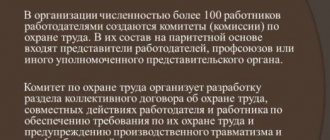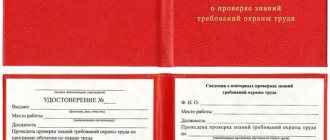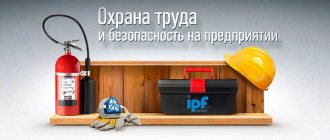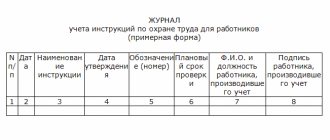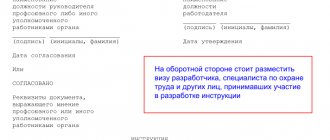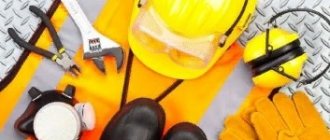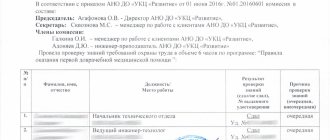Improving working conditions for employees is a set of measures aimed at increasing the comfort and attractiveness of working for a particular employer.
The law stipulates the minimum that companies and individual entrepreneurs must comply with so that the life and health of personnel are not threatened. But many companies do not stop there, trying to rise to a level above their competitors. Let's figure out what ways to improve working conditions exist, how to identify needs and implement changes.
The legislative framework
Improving working conditions in the workplace is the responsibility of the employer, provided for by a number of regulations, including:
- The Labor Code of the Russian Federation (Article 226 of the Labor Code of the Russian Federation requires that at least 0.2% of the amounts spent on labor protection be annually spent on improving the working and living conditions of workers);
- GOST 12.0.230.1-2015. Interstate standard. System of occupational safety standards. Occupational safety and health management systems;
- Order of the Ministry of Health and Social Development of the Russian Federation dated March 1, 2012 No. 181n, which contains a standard list of mandatory annual measures to improve conditions.
https://youtu.be/ZdQV7eZBTQE
How to properly prepare a labor safety action plan?
The plan is drawn up for a certain period, usually a calendar year, for example 2020. When forming it, not only the activities that must be carried out are taken into account, but also the level of funding sufficient to carry them out during the current year. The document is certified by an organization order.
When drawing up a plan for occupational safety and health, an analysis of cases at work is carried out, based on statistics from previous periods, and also takes into account studies of working conditions in the organization and the financial possibilities for implementing measures.
When developing a plan, you should adhere to the structure established in Art. 226 of the Labor Code and be guided by the planning system adopted in the organization.
Where to start with occupational safety and health at an enterprise in 2020
Drawing up an action plan begins with compiling a list of activities and priority occupational safety measures. Based on these data, the corresponding costs are planned using statistical methods for calculating expense amounts. For example, apply a deflator coefficient.
It is imperative that a specific responsible person be assigned for the implementation of each item of the plan. When establishing responsibilities and duties for occupational safety in regulatory documents, these data should be taken into account. When setting deadlines, the following must be considered:
- It is better to include the most expensive activities in the first and second quarters, since until August 1, expenses are reimbursed through contributions to the Social Insurance Fund;
- in the third and fourth quarters, carry out activities at the expense of the organization.
The legislation determines for the employer the minimum threshold of funds that he is obliged to spend on labor protection. This is at least 0.2% of operating costs (costs for manufacturing enterprises or the provision of services for an organization). The organization is obliged to submit a report on costs to the statistical body and reflect them in accounting. During a scheduled inspection, the GIT inspector verifies all this data.
How to create an estimate of labor protection costs?
There is no unified form of the document established by law; each organization has the right to independently develop it. The main goal of the plan being drawn up is to improve the production climate in the workplace and increase the level of personnel safety.
Funds allocated for occupational health can be reimbursed from contributions paid to the Social Insurance Fund . Only 20% of the injury contributions that were paid by the organization for the past year are refundable. The refund is made on the basis of an application submitted to the fund before August 1 of the current year, and the labor protection plan attached to it.
What can and should be improved
The typical list of activities contains 32 areas for creating a comfortable working environment. They can be divided into several categories:
- Technical. This includes updating equipment to improve operational safety. An example is replacing faulty equipment that could cause injury.
- Technological. This includes transformations of the work process itself to reduce labor costs. An example is the implementation of an automatic system.
- Sanitary and hygienic. They are not directly related to economic activity, but they also contribute to maintaining health. An example is the purchase of climate control equipment to maintain an optimal microclimate.
- Social. They create additional comfort and stimulate staff productivity and interest in what they do. An example is improving the content of work, providing opportunities for self-development and supporting initiatives.
- Aesthetic. This improvement of working conditions in production requires that employees enjoy their work place. Example - cosmetic repairs, room decor, creation of recreation areas.
How to identify the right directions
In addition to the measures mentioned in Order of the Ministry of Health and Social Development No. 181n, management has to implement other measures. But how to determine what a specific organization needs at a specific time. This will help:
- SOUT results. An independent examination gives an objective idea of what needs to be changed;
- proposals for improving working conditions coming from the team. If employees ask you to install air conditioning or insulate wires, you should listen to them;
- personal observations. A competent leader will certainly notice what is missing in the territory entrusted to him for greater comfort;
- methodological recommendations for improving working conditions, developed for a specific area. They can be created by industry associations or specialized researchers.
How to formalize and implement changes
All proposals and initiatives that have found support from management and the team must be included in the plan to improve working conditions and safety. Typically, such a document is developed by those responsible for occupational safety at the enterprise, but it must be approved by the manager with a separate order.
Officials have not come up with a standard form for a plan to improve conditions, but it must be formed taking into account the provisions of Art. 226 of the Labor Code of the Russian Federation and Order of the Ministry of Health and Social Development No. 181n. That is, it must indicate:
- general information about the employer and the period for which the plan will be valid (1 year or several years);
- planned activities that will ensure improved working conditions at the enterprise;
- timing of their implementation;
- persons responsible for implementing the plan;
- information on the financing of the declared measures - can be in the form of an appendix with cost estimates, if any.
Sample plan
Since each employer develops a plan to improve the working conditions of employees, taking into account organizational and production specifics, the number of employees, the area of available territories and other points, the volume of the document may vary. But it is important that the document is developed and agreed upon in advance (at the end of the year, for example), and its provisions can be implemented on time.
Results of the year: the field of labor protection
In 2020, there continues to be a steady downward trend in the level of occupational injuries. According to operational data, the number of accidents with severe consequences (group, severe and fatal) has decreased: over the 11 months of 2020, 4,078 accidents with severe consequences occurred, which is 9% lower than in the same period in 2020 (4,479 cases).
In 2020, there was also a decrease in the number of fatalities at work: in 11 months of 2020, 12% fewer workers died than in the same period in 2020 (1,018 and 1,158 people, respectively).
The death toll traditionally remains the highest compared to other economic activities in construction, manufacturing, transport, agriculture and mining.
A set of measures to stimulate employers and workers to improve working conditions and preserve the health of workers
In order to maintain the achieved dynamics of reducing occupational injury rates and bringing it to the level of economically developed countries, a set of measures is being implemented to stimulate employers and workers to improve working conditions and preserve the health of workers, as well as to motivate citizens to lead a healthy lifestyle, approved by order of the Government of the Russian Federation dated April 26, 2020 No. 833-r.
The set of measures consists of four sections:
- Improving mechanisms for preventing industrial injuries and occupational morbidity.
- Incentivizing employers and employees to improve working conditions and preserve the health of workers.
- Motivating citizens to lead a healthy lifestyle.
- Monitoring activities.
The section dedicated to improving the mechanisms for preventing industrial injuries and occupational morbidity includes priority legislative and regulatory measures aimed at modernizing the occupational safety management system, as well as compulsory social insurance, ensuring the solution to the problem of introducing a preventive model of occupational safety management and increasing the effectiveness of preventive measures in the compulsory social insurance system, including through timely detection of early signs of occupational diseases and taking the necessary preventive measures.
The second section, aimed at stimulating employers and employees to improve working conditions and preserve the health of workers, includes legislative and regulatory measures in order to increase the interest of employers in improving working conditions at the workplaces under their control.
The third section provides for measures to motivate citizens to lead a healthy lifestyle, the implementation of which will contribute to increasing the effectiveness of activities within the framework of the national project “Demography” and the federal project “Strengthening Public Health” included in it, as well as achieving certain target indicators of these projects.
The fourth section includes monitoring activities that ensure the achievement of the goals of taking a set of measures.
Special assessment of working conditions
With the entry into force on January 1, 2014, federal laws of December 28, 2013 No. 426-FZ “On special assessment of working conditions” and December 28, 2013 No. 421-FZ “On amendments to certain legislative acts of the Russian Federation in connection with the adoption The Federal Law “On Special Assessment of Working Conditions” ensures the introduction of a special assessment of working conditions in order to establish the real state of working conditions in the workplace.
As of December 26, 2020, a special assessment of working conditions was carried out at 764.5 thousand employers for 32.5 million jobs. The number of workers employed in these jobs is 43 million.
The Russian Ministry of Labor has prepared a bill “On Amendments to the Federal Law “On Special Assessment of Working Conditions”” in order to improve the mechanisms for the formation and use of data by the Federal State Information System for recording the results of a special assessment of working conditions.
To minimize the risks of violation of the social and labor rights of workers, the bill proposes:
- establish a requirement according to which information about the planned special assessment must be entered by the appraiser into the information system immediately after concluding an agreement with the employer on its conduct (before the start of its implementation);
- link the moment the results of the special assessment come into force with the entry of information about it into the state information system.
The bill provides a preventive mechanism for protecting the rights of workers: it motivates the employer to complete the procedure for a special assessment of working conditions, ensures that the state information system is filled with correct data on the results of the special assessment and increases the responsibility of the employer and the assessment organization for its results.
Improving legislation in the field of labor protection
At a meeting of the Russian Tripartite Commission for the Regulation of Social and Labor Relations, the bill “On Amendments to the Labor Code of the Russian Federation (in terms of improving mechanisms for preventing industrial injuries and occupational illnesses, compliance with labor legislation and other regulatory legal acts containing labor law norms)” was supported. prepared by the Russian Ministry of Labor together with the parties to the social partnership.
The main goals of the bill are to increase the effectiveness of the prevention of industrial injuries and occupational diseases, strengthen the dynamics of reducing group, severe and fatal injuries, and increase the level of safe work culture.
The main changes and additions proposed by the bill:
- introduction of the basic principle of prevention and prevention, based on the constant identification of hazards in the workplace, analysis and elimination of the causes of these hazards to improve working conditions;
- personal participation of workers in ensuring safe working conditions at their workplaces;
- introduction of records of microtraumas received by employees and analysis of their causes;
- granting the employer the right to conduct document flow on labor protection issues in electronic form;
- changing the approach to providing workers with personal protective equipment through the transition from the list principle of provision to provision depending on working conditions at the workplace;
- introduction of a ban on work in hazardous working conditions;
- introduction of the institution of self-assessment by the employer of compliance with the requirements of labor legislation, which will be carried out according to a list of questions prepared in advance by Rostrud.
The adoption of the bill will allow:
- give new impetus to improving working conditions in the workplace;
- maintain the positive dynamics of reducing mortality and injuries due to industrial accidents and occupational diseases;
- ensure a reduction in administrative burden and greater flexibility for the employer in building a modern occupational safety management system based on systematic analysis, assessment and reduction of existing occupational risks;
- Raise awareness of workers about working conditions in the workplace, about existing professional risks, about the guarantees provided to them, the compensation they are entitled to and personal protective equipment, as well as to ensure the involvement of workers in ensuring proper working conditions.
Updating the list of jobs where the use of women’s labor is limited
The Russian Ministry of Labor adopted Order No. 512n dated July 18, 2020 “On approval of the list of industries, works and positions with harmful and (or) dangerous working conditions in which the use of women’s labor is limited” to replace the current Decree of the Government of the Russian Federation dated February 25, 2000 No. 162 , which defines the List of heavy work and work with harmful or dangerous working conditions, during which the use of women’s labor is prohibited.
This work was carried out within the framework of the Action Plan for the implementation in 2016-2020 of the Concept of Demographic Policy of the Russian Federation for the period until 2025, approved by Order of the Government of the Russian Federation dated April 14, 2016 No. 669-r, and the Action Plan for the implementation of Stage I in 2020 National Strategy of Action in the Interests of Women for 2017-2022, approved by Decree of the Government of the Russian Federation of March 14, 2020 No. 420-r.
Based on the results of the update, the list was reduced by more than four times: instead of 456 positions, a new order of the Russian Ministry of Labor approved one hundred.
The criteria for revising and updating the list were factors dangerous to the reproductive health of women, affecting the health of the future generation and having long-term consequences.
The list excludes arbitrary restrictions on the use of women's labor, which guarantees their right to fair working conditions and allows women to expand their employment opportunities.
The order will come into force on January 1, 2021.
Subprogram " Safe work "
The “Safe Work” subprogram is implemented within the framework of the state program “Promoting Employment.”
The main directions implemented within the subprogram in 2019:
- development of a methodology for organizing internal control (self-control) of compliance with labor legislation and other regulatory legal acts containing labor law norms;
- development of a methodology for remote training on labor protection;
- development of methodological documents for employers in order to identify hazards, assess professional risks and reduce their level based on the best global practices for the most traumatic types of economic activity. The developed methods will be used by employers to prevent injuries and occupational diseases, which will help reduce economic costs and losses at enterprises;
- development of a concept for a public education campaign aimed at promoting occupational safety and health of workers.
HIV/AIDS prevention in the workplace
As part of the implementation of the Cooperation Program between the Russian Federation and the International Labor Organization, the Russian Ministry of Labor conducted a number of training seminars “Strengthening HIV/AIDS programs in the workplace,” including in the Volgograd region, Altai region, and Moscow region.
In 2020, in accordance with the Action Plan (“road map”) of the Russian Ministry of Labor for the implementation of programs for the prevention of HIV/AIDS in the workplace and the prevention of discrimination and stigmatization in work collectives of persons living with HIV infection for 2020, information and methodological materials were developed materials on HIV and AIDS prevention in the workplace, including information stands for placement at enterprises and information leaflets for workers.
All-Russian Labor Safety Week
From April 22 to 26, 2020, the 5th All-Russian Occupational Safety and Health Week (VNOT) took place at the Main Media Center in Sochi, which takes place on the eve of World Occupational Safety and Health Day to promote the prevention of accidents and diseases in workplaces around the world. The event is held on the initiative of the Russian Ministry of Labor and with the support of the Russian Government.
All-Russian Occupational Safety and Health Week is a global discussion platform dedicated to the latest trends and prospects for the development of activities in the field of occupational safety, increasing labor productivity, creating decent working conditions and improving the quality of life of each employee.
During the Week, 84 events were held (conferences, technical sessions, symposiums, round tables, lectures, master classes).
Due to the fact that 2020 is the centenary year of the International Labor Organization, the ILO events were timed to coincide with the centenary initiative of the ILO “Future of Work”.
The business program of the Week was built on the basis of a strategic theme and included four thematic sections dedicated to the discussion of strategic issues and innovations in the field of labor protection:
- regulation in the field of labor protection: challenges and strategy;
- innovations in occupational safety management: challenges of the Industry 4.0 era;
- safe work culture – creating conditions to prevent injuries and illnesses;
- modern specialist and head of labor protection.
The key event of the Week was the strategic plenary session “The Future of Occupational Safety and Health: Culture and Prevention of Safe Work.”
Also one of the most important events of the Week was the conference of the Russian Ministry of Labor. During the conference, the draft federal law “On Amendments to the Labor Code of the Russian Federation” was discussed in detail (in terms of improving mechanisms for the prevention of industrial injuries and occupational diseases, compliance with labor legislation and other regulatory legal acts containing labor law standards).
The total number of Week participants was more than 10 thousand people.
Delegations of the International Labor Organization, the International Social Security Association, and the International Association of Labor Inspections took an active part in the events.
The special guest of VNOT was the Director General of the International Labor Organization, Guy Ryder.
Consulting points of the Ministry of Emergency Situations of Russia, Rostrud, Rospotrebnadzor, Rostechnadzor, the Pension Fund of Russia and the Social Insurance Fund of Russia were organized at the Week site.
As part of the campaign “Voluntary and confidential counseling and testing for HIV in the workplace”, together with the International Labor Organization and regional centers for the prevention and control of AIDS, free anonymous testing for HIV infection with pre- and post-test counseling for participants was organized at the Week’s site.
For the second time, the Week’s venue hosted an exhibition of children’s drawings, “Occupational Safety through the Eyes of Children.” The main objective of the exhibition is to attract public attention to the problems of industrial injuries and their prevention, starting from school.
A working group, with the participation of the rector of the Academy of Watercolor and Fine Arts, People's Artist of the Russian Federation S.N. Andriyaki, a vote was held among 380 children's works presented by 63 constituent entities of the Russian Federation, and two drawings from the region were selected for display at the exhibition.
The children who attended the exhibition were awarded letters of gratitude from the Russian Ministry of Labor and creative kits from the Academy of Watercolor and Fine Arts named after S.N. Andriyaki, as well as memorable gifts from the KPMG in Russia organization.
In order to popularize modern technologies in the field of ensuring safe working conditions, demonstrate successful projects and practices in the field of state management of labor protection and departmental control over compliance with legislation in the field of labor protection, the X International Exhibition on Industrial Safety and Labor Protection SAPE-2019 was held. Not only Russian but also foreign manufacturers took part in the exhibition.
Also, as part of the Week, the All-Russian GTO festival was held among labor collectives, in which 20 teams of leading Russian state corporations, enterprises and institutions representing constituent entities of the Russian Federation took part.
The objectives of the Festival are to promote the GTO complex as the main tool for attracting the working population to physical education and mass sports, as well as improving the forms of physical education, sports and recreational work organized by employers as part of annually implemented measures to improve working conditions and safety and reducing levels of professional risks.
Work teams of the country's largest enterprises, including PJSC Rosneft, OJSC Russian Railways, State Corporation Rosatom, PJSC Sberbank and others, took an active part in the festival.
In 2020, the All-Russian Occupational Safety and Health Week will take place from April 6 to 10 in Sochi. The general theme of the event is “Health at work - sustainable development of the country’s economy.”
Territorial programs to improve working conditions and safety
Since 2020, in order to maintain the existing positive trends in occupational safety and health, the Russian Ministry of Labor has been introducing a program-targeted method of managing occupational safety and health.
To ensure a unified approach, a “Model state program of a constituent entity of the Russian Federation (subprogram of the state program) to improve working conditions and safety” was developed and recommended for use.
Currently, programs to improve working conditions and safety have been approved in all constituent entities of the Russian Federation. Program activities include improving the regional regulatory legal framework for occupational safety, continuous training of workers in occupational safety based on modern training technologies, information support and promotion of occupational safety, as well as improving medical and preventive services for the working population.
In accordance with the action plan for the implementation of the Concept for increasing the efficiency of ensuring labor legislation and other regulatory legal acts containing labor law standards, for 2015-2020, the Russian Ministry of Labor has finalized the standard state program of a constituent entity of the Russian Federation (subprogram of the state program) to improve labor conditions and safety.
In 68 regions there are program documents approved taking into account the revised program.
Updating labor safety regulations
In order to strengthen preventive measures and reduce the number of occupational injuries and occupational diseases of workers, the Russian Ministry of Labor is actively working to update existing labor protection rules, as well as to develop and publish new rules.
First of all, this concerns labor safety rules in industries that are recognized as the most hazardous in the economy. Approved labor safety rules are mandatory for all employers, regardless of their organizational and legal form.
In 2020, labor protection rules were developed and updated in sea and river ports, in the food industry, in logging, woodworking industries and during forestry work, and during the operation of rolling stock of railway transport.
The rules are developed taking into account the conventions of the International Labor Organization ratified by the Russian Federation, as well as the best global practices.
Changes to the technical regulations of the Customs Union
In accordance with the Plan for Amendments to the Technical Regulations of the Customs Union, approved by the Decision of the Council of the Eurasian Economic Commission dated October 1, 2014 No. 79, the Russian Ministry of Labor has developed changes to the technical regulations of the Customs Union “On the safety of personal protective equipment” (TR CU 019/2011).
The changes clarify the requirements for PPE against water and solutions of non-toxic substances, PPE against mechanical impacts, filtering personal respiratory protection, PPE for feet (shoes) against chemical factors, and also supplement the requirements for a filter self-rescuer used in fires and the requirements for marking personal protective equipment .
The changes took effect on November 27, 2020.


